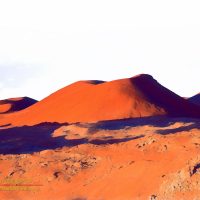The claim is often made that TMT cannot be built as the land its would be sited on is a designated resource conservation district. This is another claim is steadily repeated by telescope opponents on social media…
ITS CONSERVATION LAND! What part of that is so hard to understand? no more damage to our mountain.. please!! auwē!
Lynne Ven in a Facebook post
The crux of the claim is that being conservation district means that the telescope cannot be built near the summit of Mauna Kea as it is conservation land, that somehow the land is completely protected.
This claim argument depends on ignorance of the laws surrounding conservation lands. To anyone not familiar with the state land system this might make sense, but it is just is not true.
The summit of Mauna Kea is designated as conservation land, but after that it gets a bit more interesting…
The State of Hawaii has five different categories of conservation lands, or subzones, each with different levels of protection. There are
Protective, Limited, Resource, General and Special subzones found within the state land management system.
Each of these subzones has different management goals and rules intended to fit the various lands in the state. Conservation land is not a one-size-fits-all solution, and the subzone system is an attempt to address this.
The highest level of protection is offered by the Protective classification. Very little development or other use is permitted within a protective subzone. Examples of protective subzones are some of the most pristine and treasured places in the islands, such as the Nā Pali Coast, the Koʻolau Range, Waimanu Valley, or the Northwestern Hawaiian Islands.
§13-5-11 Protective (P) subzone. (a) The objective of this subzone is to protect valuable natural and cultural resources in designated areas such as restricted watersheds, marine, plant, and wildlife sanctuaries, significant historic, archaeological, geological, and volcanological features and sites, and other designated unique areas.
Department of Land and Natural Resources Administrative Rules section §13-5
Reading through the rules it becomes clear the Protective means protected… It is this sort of restrictive protection that many assume applies to all conservation land. Strong restrictions on permanent structures, possibly limited access, a fairly short list of allowed uses.
This contrasts highly with the goals and allowed uses of the other resource conservation subzones, where protection goals are limited and do allow uses that do not conflict with those goals.
The summit of Mauna Kea is not in a Protective subzone, rather it is a Resource subzone, which allows use of the land for specific purposes.
§13-5-13 Resource (R) subzone. (a) The objective of this subzone is to ensure, with proper management, the sustainable use of the natural resources of those areas.
Department of Land and Natural Resources Administrative Rules section §13-5
Note the large difference here, a resource subzone is recognized as having some resource that requires additional protection, but still allows development and use of that resource.
In section §13-5-24 you will find that a resource subzone may be used for a wide range of activities, both recreational and commercial. These include aquaculture, mining and mineral extraction, single family homes, and yes, astronomy facilities.
The practical effect of these protections is that a project within a conservation district is subject to a great deal more scrutiny than one located outside such a district. An environmental review must occur, either an EA or full EIS. A conservation district use permit must be applied for and received, all of this with a fair amount of public input.
This process was followed in the TMT case, include a lengthy contested case and subsequent court challenges. In the end the CDUP permit was issued to allow the project to proceed within the conservation district.
Result: Mostly False


